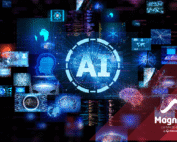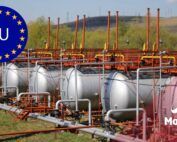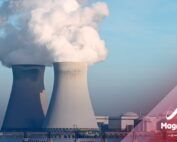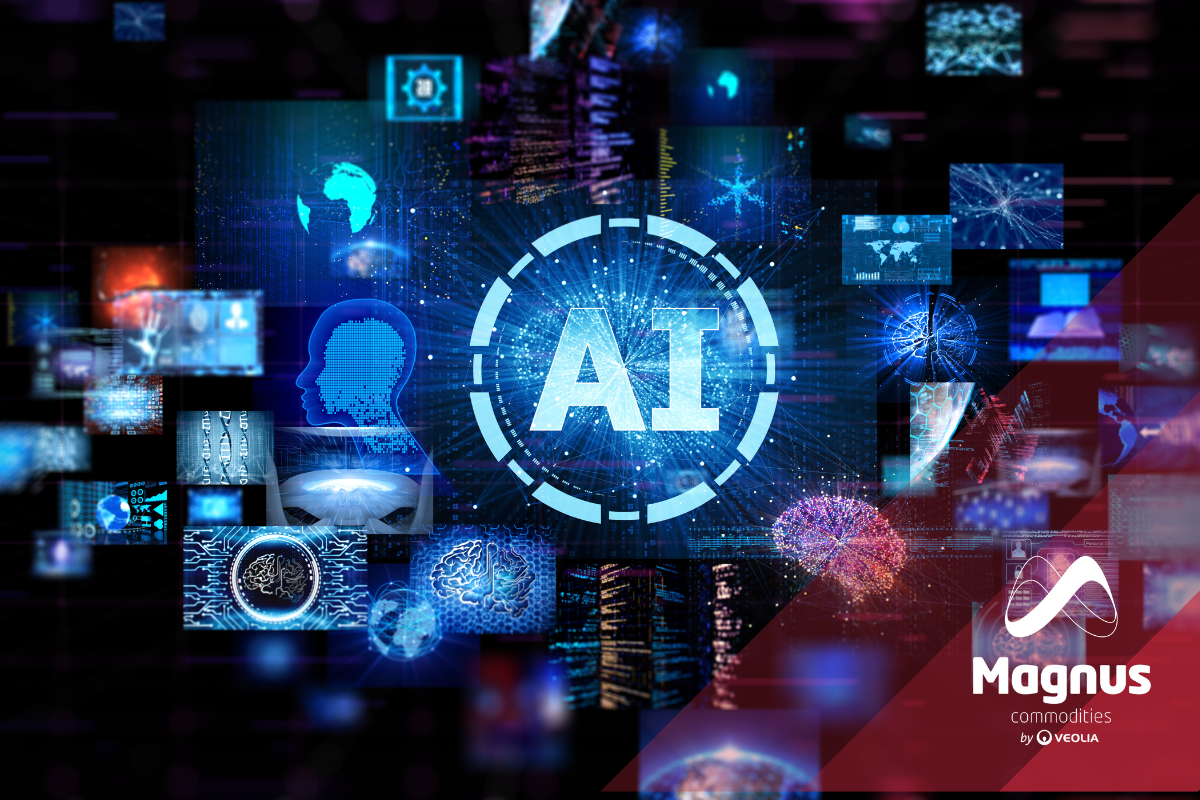
1. Introduction
In a context of increasing regulatory pressure, volatility in energy markets, and ever more ambitious sustainability targets, energy efficiency has shifted from being a choice to a strategic necessity. Organisations with high levels of energy consumption—whether in industrial, commercial or service sectors such as hotels or hospitals—now face a common challenge: doing more with less, without compromising operational continuity or competitiveness.
In this landscape, energy digitalisation is paving the way for a new generation of intelligent tools capable of transforming data into decisions. Artificial intelligence (AI), alongside machine learning and real-time energy management systems, is emerging as a key lever for optimising consumption, anticipating malfunctions and failures, reducing CO₂ emissions, and unlocking tangible operational and economic benefits.
This article explores how AI is redefining the way organisations approach energy management—and what concrete opportunities it opens for those aiming to lead the transition towards a smarter, more efficient, and sustainable energy model.
2. Artificial Intelligence – From Data to Energy Savings
Transforming data into decisions is not just a slogan – it’s a tangible reality. For companies seeking greater energy efficiency, transforming data into decisions is becoming increasingly achievable. Artificial intelligence (AI) does not replace the energy manager, but it significantly extends their ability to analyse, automate and act, enabling them to operate with a level of precision and speed previously unthinkable.
2.1What can AI do for energy consumption?
AI goes beyond simply observing past patterns. Its real value lies in its ability to anticipate behaviours, optimise systems in real time, and learn continuously. Through machine learning and deep learning models, AI can:
- Accurately forecast energy demand.
- Detect anomalous consumption patterns that could lead to leaks, failures, or unnecessary costs.
- Propose (and implement) automatic adjustments to various systems and/or processes such as lighting, climate control, or thermal operations.
- Assess the energy performance of facilities based on variables like occupancy, outdoor temperature, or operational conditions.
This does not merely enhance efficiency—it also frees up time for technical teams, improves the reliability of decisions, and reduces the margin of human error.
2.2From data to impact: integration with energy management systems
The effectiveness of AI multiplies when integrated with existing systems such as BEMS (Building Energy Management Systems), HEMS (Home Energy Management Systems), SCADA (Supervisory Control and Data Acquisition), or IoT platforms. Through sensors and connected devices, these systems generate continuous streams of operational data that AI can process and analyse in real time.
For example, a BEMS system enhanced with AI not only records HVAC (Heating, Ventilation and Air Conditioning) consumption data, but can also anticipate demand peaks, recalibrate temperature setpoints, and assess the impact of different strategies based on actual building occupancy. The same applies in industrial environments, where SCADA systems can be paired with predictive algorithms to optimise energy consumption without compromising production.
2.3 Regulation in the European Union: implications of the AI Act for intelligent energy management
As artificial intelligence solutions become increasingly integrated into industrial, commercial, and tertiary facilities, so too does the need to ensure these technologies are safe, transparent, and ethically sound. In this context, the European Union has introduced the AI Act—the world’s first comprehensive regulation on artificial intelligence—which is currently in the implementation phase.
This regulation adopts a risk-based approach, classifying AI applications into four levels: prohibited, high-risk, limited-risk, and minimal-risk. Many of the tools applied to energy management, such as demand forecasting systems, Building Energy Management Systems (BEMS), or demand response solutions, could fall under the “high-risk” category due to their operation within critical infrastructure environments or their potential impact on the functioning of essential sectors such as energy.
In industrial, commercial or service-sector installations, AI systems that automate key energy-related decisions, such as climate control, thermal processes, or energy storage, must comply with the specific requirements applicable to high-risk systems. These include prior conformity assessments, full data traceability, comprehensive technical documentation, and meaningful human oversight. In contrast, tools that merely provide recommendations without executing actions directly are classified as limited risk, though still subject to transparency and explainability requirements for end users.
While many of these obligations fall on technology providers, user companies also assume responsibilities if they adapt, retrain, or modify AI systems. In such cases, they may be classified as “secondary developers” under the AI Act regulation and would therefore be required to meet several of the regulation’s technical and organisational standards.
This regulatory framework does not operate in isolation. It interacts with other key pieces of EU legislation, such as the General Data Protection Regulation (GDPR)—when AI systems process information relating to building occupancy, staff behaviour, or usage patterns—and the NIS2 Directive on cybersecurity, which applies when connected technologies are used in smart grids, microgrids, or critical systems.
In addition to legal requirements, the European Union promotes a set of voluntary ethical principles as outlined in the Ethics Guidelines for Trustworthy AI developed by the AI HLEG expert group. These include principles such as non-discrimination, algorithmic traceability, transparency, human oversight, and respect for human dignity—especially relevant in sectors like energy, where automated decisions can have significant technical, economic, and social implications.
In summary, the AI Act does more than regulate the functioning of algorithms: it establishes a new standard for trust, accountability, and governance for organisations seeking to benefit from artificial intelligence while meeting their ethical and legal obligations. For the energy sector, it represents both a technical challenge and a strategic opportunity to differentiate through proactive compliance, technological transparency, and digital sustainability.
2.4Digitalisation with Return: Efficiency That Delivers Results
Beyond technical improvement, implementing AI-based solutions is a strategic decision. According to various industry studies, energy efficiency projects that incorporate artificial intelligence can offer returns on investment (ROI) within 1 to 3 years, depending on the scope of the system and the type of facility.
The potential of AI in end-use energy sectors is both significant and increasingly quantifiable. In industry, for example, widespread adoption of AI could result in energy savings of up to 8% by 2035 in sectors such as machinery, electronics, and component manufacturing (grouped under “other industry” in the graphic below). Significant savings are also expected in light commercial vehicles (over 6%), rail systems (above 7%), and non-residential buildings (around 4%).
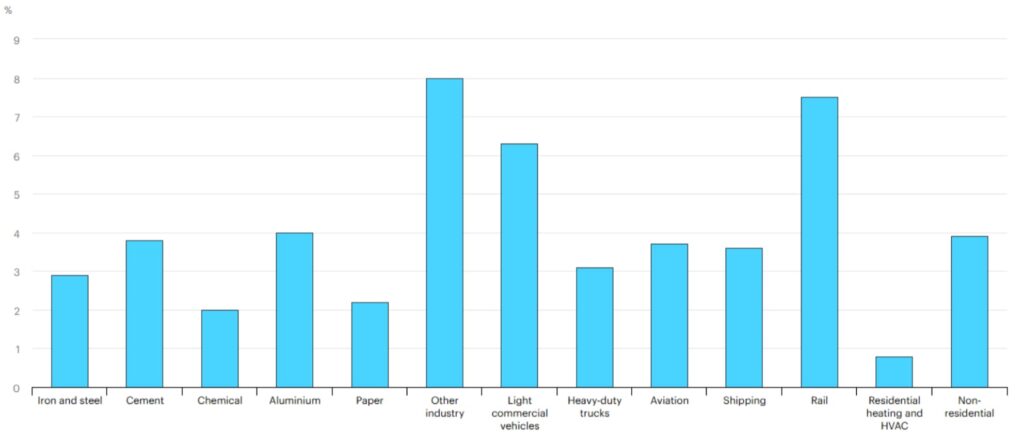
Source: IEA – Energy savings potential by sector in the Widespread Adoption Scenario, 2035.
In the transport sector, AI is already being used to improve vehicle performance and logistics operations, reducing fuel consumption and extending the range of electric vehicles. Research is also underway into using AI to reduce the formation of contrails in aviation, which has a direct impact on emissions. In buildings, while digitalisation is progressing at different rates depending on the region or facility type, there are already proven gains in energy efficiency and demand-side flexibility.
These solutions also contribute to achieving ESG goals, enhance traceability in sustainability actions, and position organisations as proactive players in the energy transition.
From hotel HVAC systems to industrial production lines, artificial intelligence is already helping organisations consume more intelligently, reduce costs, and move towards a more responsible energy model.
But how does this translate into a concrete decarbonisation strategy?
3. Reducing CO₂ Emissions – Beyond Efficiency
Improving energy efficiency is, without doubt, one of the most direct and cost-effective ways to reduce CO₂ emissions. But the true potential of artificial intelligence goes well beyond savings. Its value lies in aligning day-to-day operations with global decarbonisation goals, enabling decisions that would otherwise require significant time, resources, and specialist expertise.
3.1From Efficiency to Active Decarbonisation
Reducing emissions is no longer just about reputation or regulatory compliance—it has become a competitive advantage. Organisations that can anticipate, measure, and actively manage their carbon footprint are better positioned to access sustainable finance, improve ESG ratings, meet supply chain requirements, and satisfy increasingly demanding customers.
Artificial intelligence enables a shift from reactive energy management to active decarbonisation. How? Through tools that not only optimise energy use but also:
- Estimate, in real time, the emissions associated with each energy-related action or process.
- Prioritise actions based on their potential impact on carbon footprint reduction.
- Simulate consumption scenarios to evaluate strategies such as electrification or technology replacement.
- Identify opportunities to integrate renewable energy sources intelligently and cost-effectively.
According to estimates by the International Energy Agency (IEA), the widespread adoption of existing AI applications across end-use sectors could lead to a reduction of around 1.4 gigatonnes (Gt) of CO₂ by 2035. Notably, this estimate considers only the technologies already available today, without accounting for potential breakthroughs that may emerge in the next decade.
This impact is mainly concentrated in three sectors: industry, transport, and buildings, as illustrated in the following chart:
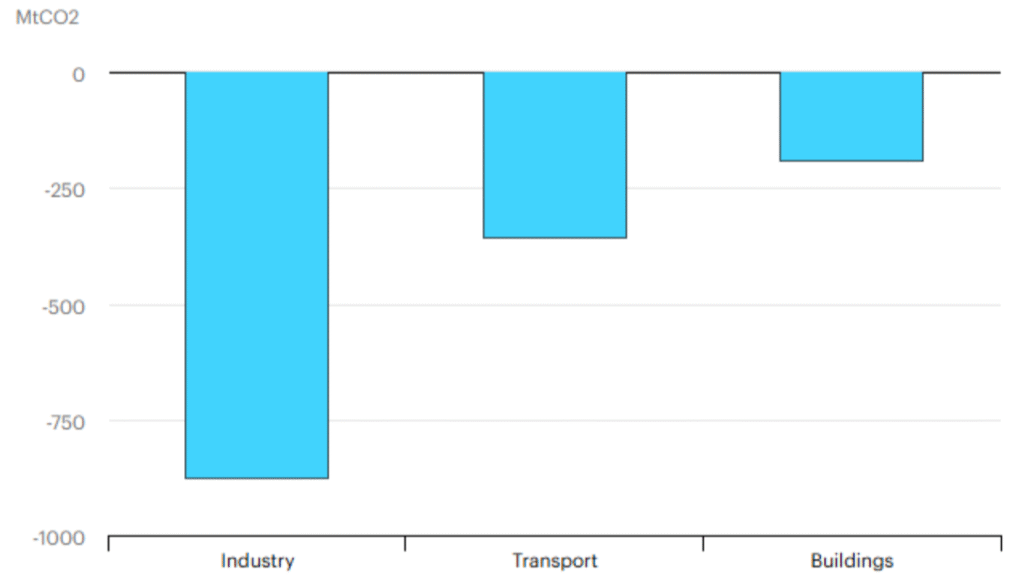
Source: IEA – Projected reductions in direct and indirect emissions across end-use sectors, Widespread Adoption Scenario, 2035.
3.2 Demand Management and Renewables Integration: Keys to a Cleaner System
One of the main challenges of the energy transition lies in the intermittent nature of renewable energy sources. This is where AI, applied to smart demand-side management, plays a decisive role. Using demand response algorithms, facilities can adjust their consumption to match periods of greater availability of renewable electricity (such as solar or wind), thereby reducing reliance on fossil-based energy.
This type of management not only reduces emissions but also enhances the flexibility of the power system, supports grid stability, and allows users to benefit from lower energy prices during off-peak periods or times of surplus renewable generation.
Moreover, artificial intelligence facilitates the integration of distributed renewable generation in microgrids, self-consumption installations, or hybrid systems. It does so by dynamically managing battery storage systems, photovoltaic generation, and electrical loads—based on weather forecasts, anticipated demand, and real-time market conditions.
The result is a more responsive and balanced energy system, capable of absorbing and making the most of variable clean energy sources without compromising operational needs.
3.3Measurement, Traceability and Transparency: Foundations for Credible Decarbonisation
Emission reductions must be measured with precision and communicated transparently. In this respect, artificial intelligence enables the consolidation of dispersed data sources—such as energy consumption, schedules, usage profiles, and emission factors—into platforms that offer full visibility of an organisation’s carbon footprint.
These systems allow companies to:
- Quantify emissions associated with specific areas, equipment, or processes.
- Automatically generate reports aligned with standards such as the GHG Protocol.
- Provide sustainability and energy management teams with actionable indicators—both historical and predictive.
Furthermore, by incorporating machine learning, these systems can continuously improve the quality of the data and reduce uncertainty in emissions calculations—an especially valuable capability in sectors with complex or variable energy processes.
In short, artificial intelligence not only helps companies consume less energy, but to consume more responsibly: with lower impact, greater control, and stronger alignment with climate commitments.
Most importantly, it does so in a way that is measurable, verifiable, and strategic.
4. Practical Applications: Efficiency and Sustainability in Daily Operations
The opportunities are diverse, and many use cases are already being successfully implemented:
- In the United States, Cammeby’s International implemented BrainBox AI’s solution in a 32-storey building in Manhattan, New York City. A 15.8% reduction in HVAC-related energy consumption was achieved, resulting in savings of over $42,000 and the avoidance of 37 metric tonnes of CO₂ emissions over 11 months.
- In Singapore, the commercial building Keppel Bay Tower adopted an intelligent adaptive lighting system that reduced lighting-related energy consumption by 70%. This improvement was achieved by dynamically adjusting lighting usage based on real-time occupancy and natural daylight availability. As a result, the building achieved an overall 30% reduction in total energy consumption and became the country’s first net-zero energy commercial building.
- Nestlé Waters implemented Schneider Electric’s EcoStruxure Clean-In-Place Advisor at its Perrier bottling plant in Vergèze, France, achieving a 20% reduction in downtime related to CIP cleaning cycles and improving productivity. By optimising the cleaning process with real-time diagnostics and monitoring, the company achieved greater traceability, improved food safety compliance, and a significant reduction in resource use. As a result, 340 tonnes of CO₂ emissions were avoided in the carbonated water process within the first year, and the solution was replicated across new production lines.
- EDF Energy, one of Europe’s largest energy providers, developed an AI-based energy demand forecasting system to enhance grid efficiency and reduce energy waste. A 25% improvement in forecasting accuracy was achieved by processing real-time data from millions of smart meters, weather patterns, and market behaviour. This led to a 30% reduction in energy waste, a 20% increase in grid efficiency, and the integration of 35% more renewable energy without compromising system stability. The solution also enables dynamic load adjustments in real time, helping prevent overloads and directly supporting decarbonisation and supply resilience goals.
- WattTime, a leading environmental tech organisation, developed an AI-powered energy optimisation platform to help consumers and businesses reduce their carbon footprint. A 20% reduction in carbon emissions was achieved by monitoring real-time electricity grid emissions and automatically shifting consumption to periods with cleaner energy availability. This resulted in a 35% increase in renewable energy adoption, a 15% decrease in electricity costs for participating households, and a 40% improvement in sustainability tracking and reporting accuracy, facilitating compliance with ESG and decarbonisation targets for large enterprises.
- ChargePoint, a global leader in EV charging infrastructure, implemented an AI-based charging network management system to optimise charging schedules, balance grid demand, and improve renewable energy integration. A 30% reduction in EV charging station wait times was achieved by monitoring occupancy in real time and applying dynamic load-balancing algorithms. This led to a 25% improvement in energy distribution efficiency, increased grid stability, and a 35% rise in renewable energy use among users adopting AI-optimised charging schedules. The system not only enhances user experience but also reduces operating costs and contributes to the decarbonisation of electric mobility.
These are not hypothetical technologies from laboratories—they are mature solutions that many companies have already incorporated into their daily operations, yielding measurable benefits in terms of energy savings, emission reductions, and improved competitiveness.
5. Barriers and Challenges in Adopting AI for Energy Management
Artificial intelligence has already proven its potential to transform the way organisations manage energy. However, large-scale adoption still faces several structural, technical, and cultural obstacles. The promise is clear, but the path to scalable, widespread integration involves overcoming challenges that are not always sufficiently addressed.
5.1Interoperability, Costs, Privacy and Trust
One of the primary obstacles is technological interoperability. Many industrial or commercial facilities operate with equipment from different manufacturers, of varying generations and communication protocols. Integrating these systems—from sensors to SCADA or BEMS platforms—with AI algorithms is not always straightforward. The lack of open, universal standards complicates device connectivity, delays project timelines, and increases implementation costs.
Secondly, perceived cost (rather than actual cost) continues to be a barrier. Although return on investment is often rapid, especially in high-consumption facilities, many companies still view AI as an “advanced” or “expensive” technology. This is made worse when there is no in-house expert who can interpret the technical language and translate the investment into clear business benefits.
Data privacy is also a key concern. AI-based energy management requires the collection and real-time analysis of large volumes of operational data, which raises legitimate questions about data security and usage. While this concern can often be mitigated through robust platforms, clear governance policies, and certified cloud environments, it remains a significant factor in decision-making, particularly among technical or IT managers.
Lastly, there is the matter of trust in the technology. Despite recent progress, a gap remains between what AI can do and what users believe it can do. The opaque nature of some models (so-called “black box” algorithms) and the complexity of technical terminology can lead to scepticism. Organisations are reluctant to cede control over critical systems, and any new technology must prove its reliability, transparency, and consistency before it is widely embraced.
5.2 What Is Needed to Scale These Technologies?
Scaling up the use of AI in energy management requires more than technical validation—it demands an enabling ecosystem that removes adoption barriers and builds confidence. Key success factors include:
- Simplified implementation: Solutions must be modular, interoperable with existing infrastructure (BEMS, SCADA, ERP), and adaptable to each organisation’s level of digital maturity. Complexity should never be a barrier to adoption.
- Real-world use cases: Adoption is driven not by theory but by measurable impact. Clear examples—whether in HVAC optimisation, predictive maintenance, or intelligent forecasting—turn AI from an abstract concept into a practical, results-oriented tool.
- Collaboration between energy and technology experts: Efficiency engineers, operations managers, and data scientists must work together. Profiles such as the “digital energy manager” or “energy data analyst” are critical for translating insights into action.
- Skills and digital mindset: For AI to be trusted and scaled, technical, operations and maintenance teams need to understand how it works and what it enables. Training reduces resistance, empowers decision-making and ensures long-term success.
- Regulatory clarity and institutional support: The EU AI Act, combined with frameworks like GDPR and NIS2, provides legal certainty. When aligned with incentives and public funding programmes for digitalisation and energy transition, adoption becomes not only viable but strategic.
AI is already here, but its widespread adoption will depend on our ability to integrate it wisely, eliminate friction, and build trust. Organisations that move early and lead this process will be better equipped to compete in a marketplace where efficiency, sustainability, and data go hand in hand.
6. Conclusions
Artificial intelligence is no longer a promise—it is a practical reality that is already helping companies reduce energy consumption, lower costs, and cut CO2 emissions. From predictive maintenance in manufacturing plants to adaptive lighting in commercial buildings and smart forecasting at the grid level, the examples are multiplying—and the results are measurable.
The real power of AI lies not in the technology itself, but in how it is applied. For organisations with high energy demands, it means going beyond theory: assessing available data, identifying critical processes, and integrating smart solutions into daily operations. In doing so, AI becomes more than an efficiency tool—it becomes a strategic asset.
At the same time, navigating this transformation responsibly requires understanding the evolving regulatory framework. The AI Act, GDPR and cybersecurity directives shape not only how these systems are deployed but also how trust, transparency, and accountability are maintained. Leading companies are already seeing compliance not as a barrier, but as a differentiator in an increasingly digital and decarbonised energy landscape.
If you found it interesting, please share it!
Recent Articles
